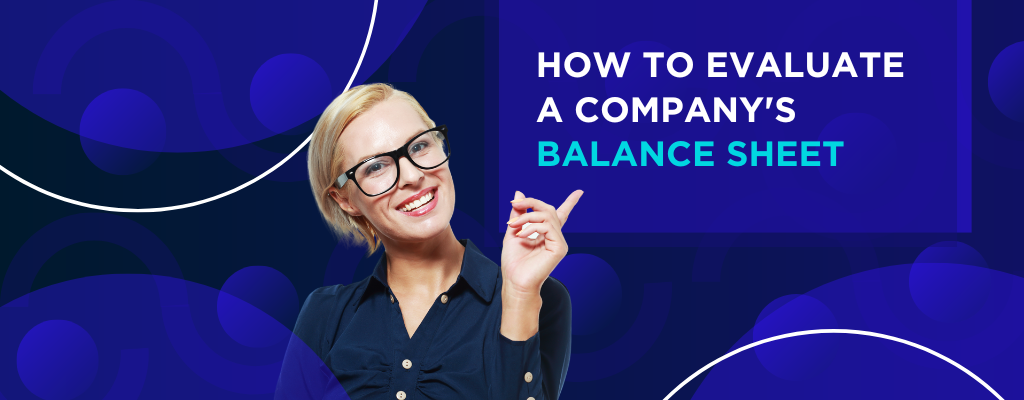How to Evaluate a Company’s Balance Sheet
It is said that the balance sheet reflects a company’s work. Is that true? If it is an important financial document, you must know how to evaluate your company’s balance sheet. In this blog, we will help you learn how to do so, but before we proceed, let’s understand what a balance sheet is.
What is a Balance Sheet?
A balance sheet is a financial statement that provides an analysis of a company’s financial position at a specific point in time. It consists of three main sections: assets, liabilities, and equity.
A balance sheet is an essential tool for investors to evaluate a business’s financial health and stability, assess risk, identify the potential for growth, etc. By examining a balance sheet, investors can make informed investment decisions and reduce their risk of financial loss.
Besides attracting investors, balance sheets are essential for businesses for several reasons. Some of these reasons are:
- A balance sheet helps businesses assess their financial health by providing an overview of their assets, liabilities, and equity. This information allows owners and investors to determine the business’s ability to meet its financial obligations and whether it is financially stable.
- A balance sheet is an essential tool for planning and decision-making. It provides information on the business’s financial resources and helps owners and managers make informed decisions about investments, expansion, or other business activities.
- By comparing balance sheets over time, businesses can evaluate their financial performance and identify improvement areas. For example, if a business’s liabilities are increasing faster than its assets, it may indicate that it needs to manage its debts more effectively.
- In many jurisdictions, balance sheets are required by law, and businesses must prepare and submit them as part of their financial reporting obligations. Failure to do so can result in penalties or fines.
How to Evaluate a Balance Sheet

Analyze the Composition of Assets
The assets section of the balance sheet lists all the resources owned by your company, including cash, investments, property, plant, equipment, and inventory. The composition of assets can give insights into the company’s operational efficiency and future growth potential.
For instance, if a significant portion of the assets is in the form of property, plant, and equipment, it could indicate that your company is investing heavily in capital expenditures, which could affect its liquidity.
Review the Composition of Liabilities
The liabilities section of the balance sheet includes all the debts and obligations owed by your company, including loans, accounts payable, and accrued expenses. The composition of liabilities can give insights into the company’s solvency and creditworthiness.
For example, a high proportion of long-term debt could indicate that your company has taken on significant financial leverage, which could affect its ability to pay back its debts in the future.
Calculate the Current Ratio
The current ratio is a liquidity ratio that measures a company’s ability to pay its short-term obligations. It is calculated by dividing current assets by current liabilities. A current ratio of 1 or higher is generally acceptable, indicating that the company has sufficient assets to cover its current liabilities.
A current ratio below one could indicate that the company may have difficulty meeting its short-term obligations.
Calculate the Debt-to-Equity Ratio
The debt-to-equity ratio is a solvency ratio that measures the company’s financial leverage. It is calculated by dividing total liabilities by total equity.
A high debt-to-equity ratio indicates that the company has a significant amount of debt relative to its equity, which could make it more vulnerable to economic downturns or changes in interest rates.
Analyze the Quality of Earnings
The quality of earnings refers to the degree to which a company’s reported earnings are sustainable, reliable, and transparent. To evaluate the quality of earnings, you can review your company’s revenue recognition policies, accounting practices, and the consistency of its earnings over time.
A company with high-quality earnings is generally more attractive to investors than one with low-quality earnings.
Look for Any Off-Balance-Sheet Liabilities
Off-balance-sheet liabilities refer to obligations not listed on a company’s balance sheet but are still significant enough to affect its financial health. Off-balance-sheet liabilities include operating leases, pension obligations, and contingent liabilities.
You should review your company’s footnotes and other disclosures to identify any off-balance-sheet liabilities that could affect your financial position.
To Sum It Up
Evaluating a company’s balance sheet is essential to analysing its financial health and investment potential.
By analyaing the composition of assets and liabilities, calculating liquidity and solvency ratios, analysing the quality of earnings, and looking for off-balance-sheet liabilities, you can better understand your company’s financial position and make more informed business decisions.

